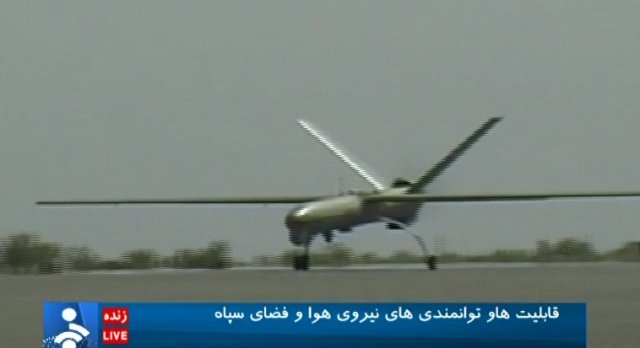 The unmanned aircraft, launched by Iran-backed Hezbollah militants in Lebanon on Oct. 6, is now believed to have transmitted pictures of preparations for a joint Israel-US military exercise, ballistic missile sites, and possibly Israel’s top-secret nuclear reactor near Dimona.
The unmanned aircraft, launched by Iran-backed Hezbollah militants in Lebanon on Oct. 6, is now believed to have transmitted pictures of preparations for a joint Israel-US military exercise, ballistic missile sites, and possibly Israel’s top-secret nuclear reactor near Dimona.
The three-hour flight was initially downplayed by Israeli officials red-faced over the shocking breach of their airspace.
Even the ultimate interception by an F-16 jet was botched — it took two tries for the pilot to down the unmanned plane.
An Israeli defence source blamed the aircraft’s infiltration on its “unfamiliar stealth elements.”
An Israeli military observer asked: “How could we defend this country from thousands of rockets and missiles if we can’t block a single Iranian UAS?”
The drone is said to have been a new Shahed-129, unveiled by Tehran last month. It has a range of up to 1,200 miles and a flight duration of 24 hours.
Hezbollah vowed to continue UAS surveillance flights.
Sheik Hassan Nasrallah, a Hezbollah leader, said in a televised address that the drone was built in Iran, launched in Lebanon, and conducted a reconnaissance of “sensitive and important locations.”
He claimed the Dimona nuclear facility in the Negev desert was one of the sites it overflew.
“This is not the first time and will not be the last,” Nasrallah said. “We can reach any place we want.”
Hezbollah’s TV station broadcast animated footage detailing the aircraft’s flight, saying it flew south over the Mediterranean, avoiding detection by Israeli radar before reaching the Gaza Strip.
The aircraft appears to have flown unseen over Gaza before proceeding to the Negev, where it was shot down. The aircraft had traveled 200 miles, the station claimed.
Israeli officials initially refused to discuss the Oct. 6 infiltration. But on Thursday, Prime Minister Benjamin Netanyahu admitted Hezbollah had been responsible.
UAS expert Micah Zenko, of the Council on Foreign Relations, said Hezbollah has been flying crude UAS over Israel for years and that the recent breach was “insignificant.”
“Israel usually tracks them as they come across the border and often doesn’t bother to shoot them down,” Zenko told CNN.
Hezbollah has attempted to send unmanned aircraft into Israel since 2004, and has claimed they could carry explosives and strike deep into Israel.
The last known attempt by Hezbollah to use a UAS came during the 2006 war, when Israel gunned down an Iranian-made unmanned aircraft that entered its airspace.
Source: New York Post
